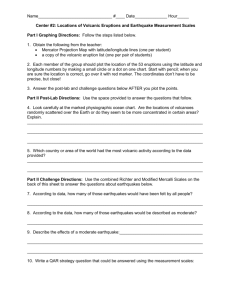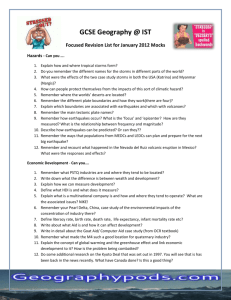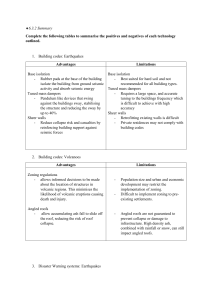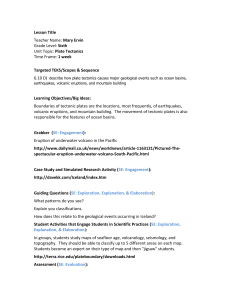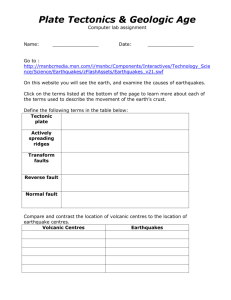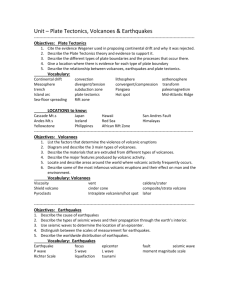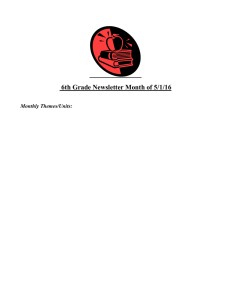File
advertisement
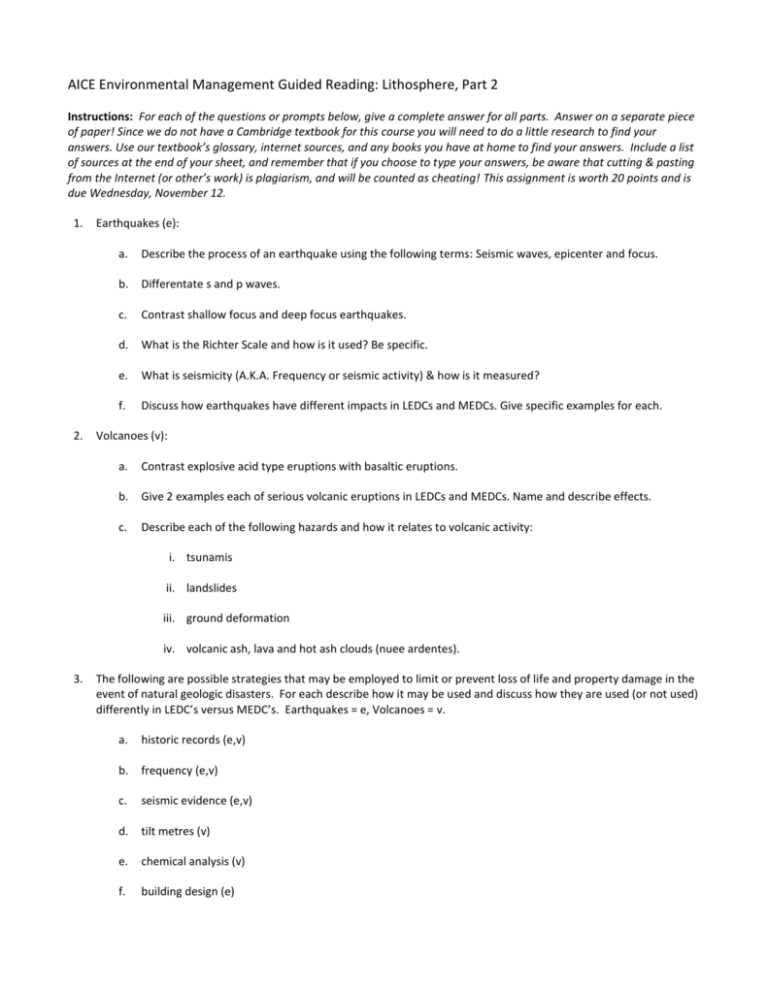
AICE Environmental Management Guided Reading: Lithosphere, Part 2 Instructions: For each of the questions or prompts below, give a complete answer for all parts. Answer on a separate piece of paper! Since we do not have a Cambridge textbook for this course you will need to do a little research to find your answers. Use our textbook’s glossary, internet sources, and any books you have at home to find your answers. Include a list of sources at the end of your sheet, and remember that if you choose to type your answers, be aware that cutting & pasting from the Internet (or other’s work) is plagiarism, and will be counted as cheating! This assignment is worth 20 points and is due Wednesday, November 12. 1. 2. Earthquakes (e): a. Describe the process of an earthquake using the following terms: Seismic waves, epicenter and focus. b. Differentate s and p waves. c. Contrast shallow focus and deep focus earthquakes. d. What is the Richter Scale and how is it used? Be specific. e. What is seismicity (A.K.A. Frequency or seismic activity) & how is it measured? f. Discuss how earthquakes have different impacts in LEDCs and MEDCs. Give specific examples for each. Volcanoes (v): a. Contrast explosive acid type eruptions with basaltic eruptions. b. Give 2 examples each of serious volcanic eruptions in LEDCs and MEDCs. Name and describe effects. c. Describe each of the following hazards and how it relates to volcanic activity: i. tsunamis ii. landslides iii. ground deformation iv. volcanic ash, lava and hot ash clouds (nuee ardentes). 3. The following are possible strategies that may be employed to limit or prevent loss of life and property damage in the event of natural geologic disasters. For each describe how it may be used and discuss how they are used (or not used) differently in LEDC’s versus MEDC’s. Earthquakes = e, Volcanoes = v. a. historic records (e,v) b. frequency (e,v) c. seismic evidence (e,v) d. tilt metres (v) e. chemical analysis (v) f. building design (e) g. and rescue and aid (e,v)


